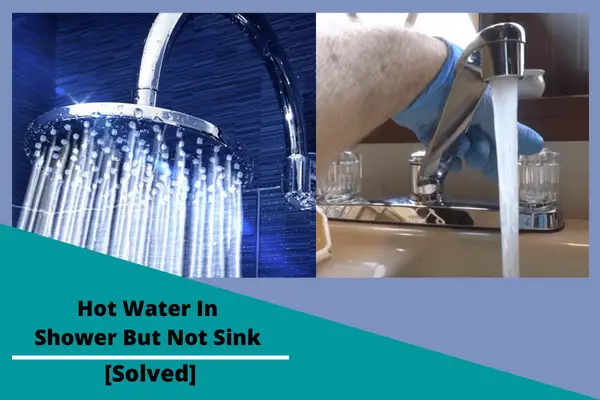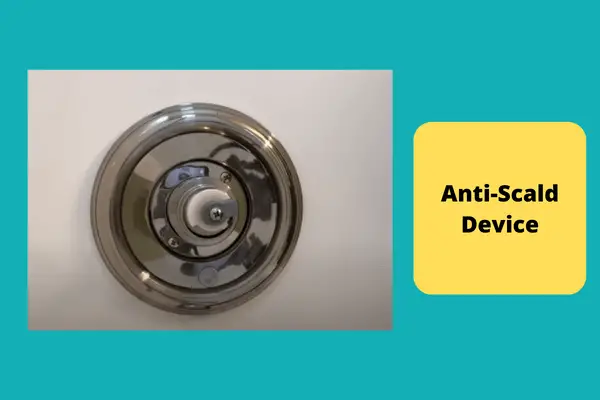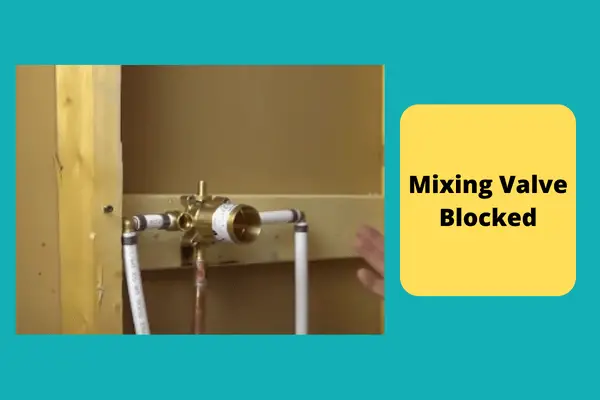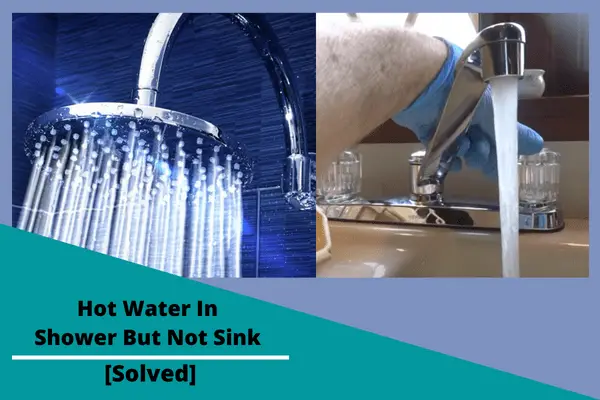Having a good heater installed with your water line is very useful nowadays. You get to have hot water for shower, dishwashing, cleaning cloths, etc. But what happens when there’s hot water in shower but not sink is yet to pour hot?

Well, if there’s hot water everywhere except the sink, there’s no issue with the central heater or water line. You can find the main issue either in the mixing valve or the anti-scald device. These two components mainly regulate the temperature and flow of water in an outlet.
If the components controlling the hot water is defective at the basic level, you can easily deal with it single-handedly. But major problems make you hire a plumber. So, let’s check out the reasons and the solutions you can follow.
Table of Contents
Hot Water In Shower But Not Sink [3 Easy Solutions]
When hot water runs out in one shower but not the other outlets, there’s no need to think of any major troubleshoot methods. Some minor malfunctions are stopping from hot water coming out of your sink.
These issues might not be as big as other major plumbing issues. But not solving them would also stop the hot water supply for good in the sink. Now, let’s see what those problems are and how to eliminate them.
Note: You can also read how to fix the Kohler Shower valve no hot water.
1. Bad Anti-Scald Device
Modern shower or faucet valves have an Anti-scald device or rotation limiter beneath the handlebar or knob. The job of this component is to limit the moving area of the handle. For this, the handle can’t go too right or too left.

By limiting the movement, they also make the handle regulate the water temperature and pressure stay within a decent range. However, your faucet handle might have an anti-scald device that’s not letting the handle move in the direction that can open the hot water inlet. And that’s why you’re not getting hot water in the sink.
Solution:
- First of all, bring out the mother key from the handle to take out the handlebar.
- Next up, you’d see a white thick plate over the cartridge. This thing is actually the anti-scald device we’re talking about.
- Move the device a bit. Then, pull the device and push back keeping it twisted a bit rightwards if the hot inlet is on the right side or vice versa.
- Check the faucet and see whether it’s pouring hot water or not. If not, repeat the method again to loosen the anti-scalp valve.
2. Mixing Valve Blocked
If the anti-scalp device is working fine, you better think of the mixing water valve for the shower or kitchen. The mixing valve is the core component that acts according to the user’s commands. It opens and closes the path of both hot and cold inlets. Besides It sets the pressure of water too.

A mixing valve can get broken or damaged due to excessive tension from water or the movement of the handle. Along with that, there’s a possibility of valve housing getting blocked because of mineral deposits.
The broken pieces and deposits can become an obstacle to the water path. Or, the valve can fail to work on the user’s command. Because of this, the mixing valve stops supplying hot water.
Solution:
- As said earlier, bring out the handle first. Then put off the valve system from the main line.
- If there’s a huge amount of mineral buildup, take 1:1 vinegar and water solution to clean the mixing valve. Pour the valve inside the mixture for a while, and then rub with a toothbrush.
- But if you see the valve is broken, then don’t think of anything but replacing the mixing valve with a new suitable OEM model.
[Note: Many might not know where the main mixing valve is located. You should hire a plumber in this case]
3. Hot Water Inlet Damaged Or Stopped
There are separate inlets connected with the mixing valve or main valve for both hot and cold water. Each inlet has an unlocking key. If the key is not kept loose open, the water would not come out from the inlet.

Most of the time, we close those inlets while replacing any faucet or shower. One can forget to open the hot inlet again after the reinstallment. This stops the hot water from gathering in the mixing valve.
Another possibility is the key of the inlet is jammed or the inlet mouth is jammed. The result is the same in this matter also.
Solution:
- Take all necessary tools and start disassembling the handle or knob.
- After removing the handle, you could see the inlets in red and blue color. The red line is the hot water line. Put the hot water’s inlet key in the same position as the cold water’s one. This can put everything back to normal.
- But here’s a catch. The inlets can be far from the faucet system or handle valve if the mixing valve is not closer to the handle. In that case, you’ve to find your home’s plumbing map or contact a plumber.
Some Other Reasons For Hot Water In Some Faucets But Not Others
These are the main three reasons why one or two faucets fail to give hot water. Besides those, there might be some other facts behind the issue. Although some other problems might also appear along with no hot water issue as the symptoms of those issues. Before wrapping up, we think you should know about the other causes too in short.
Airlock: Sometimes, the air gets stuck in the lines and blocks the water flow. To prevent it, you must put the building’s main valve into full mode and open all the outlets. Let the water full flow for a while. Things would be okay after that.
Leakage: The hot water line can get corroded and leak from a few places when it gets older. You’ve to replace the pipes to prevent leakage and bring back the flow to normal.
Extra Distance from the Heater: Many might not believe it but it’s seen that if the water outlet is far from the heater, then there’s a chance that the outlet might not get the exact required temperature regulation. Here, you can adjust the position of the heater in your home.
FAQs:
How do you fix a shower mixing valve?
Firstly, you should clean the mineral deposits. Then, replace the small parts of the valve which are damaged or leaked. But don’t hesitate to replace the old mixing valve that’s getting corroded or badly damaged.
How do I know if my shower mixer valve is bad?
You can consider your shower mixer valve bad if the valve is failing to hold the pressure or temperature. Another symptom of a bad valve is your handle would get stuck often. Apart from all these, bad valves can make showerheads and faucets leak water despite being off.
How often should you replace a shower valve?
A shower valve usually lasts more than around 20 years. But few normal models can lose their longevity due to hard water or rust.
Summary
So, the main thing is it’s very easy to identify why everything except your sink isn’t having hot water. But you should be very precise when fixing the issue. That’s why we insist to learn the right ways to handle the issues.
If you get stuck anywhere, don’t hesitate to hire a professional for the job. However, you can reach us anytime to get out of any serious issue unknown to you.


About James
James founded HomeUpgradeLab & was sharing his experiences to fix issues related to bathroom and toilet fixtures & fittings. Read to know more about James Hill & how he started this blog.